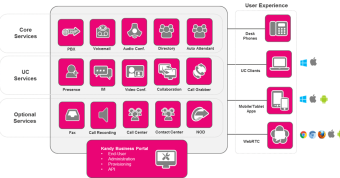Redefining Mobile Development – Apps to APIs, Solutions to SDKs
Is mobile application development become easier and more creative than ever? We think so! Will this drive even more useful, entertaining and sophisticated experiences, fanning the flames on the already red hot mobile ecosystem? Most definitely. Is the very definition of the mobile ecosystem changing, even as the real-time communications industry moves up into the applications layer with more “software everywhere?” Roger that!
Ten years ago I remember looking at a really intense Motorola mobile ecosystem graphic, and it was heavily focused on the core network and various network functions, and heavily laden with acronyms. This was years before Google acquired the company only to sell it to Lenovo earlier this year (keeping the patent portfolio of course!)
Today’s mobile ecosystem looks entirely different, and is more of a “software mash-up” geared around applications that can work on multitude devices and operating systems. The new ecosystem is a system of APIs and SDKs which are making “mobile app development” easier and changing the process for not only developing new applications, but inventing them. The new mobile ecosystem is a “Bauhaus” of digital creativity, where ideas are sparking other ideas, and “interoperability” is less physical and more ephemeral.
We’re moving from “Apps” to “APIs” and from “Solutions” to “SDKs” with increasingly powerful platforms being built where developers can grab code, find other developers to work with, and leverage high scale processing services that are turning real-time voice, data and video into embedded enhancements to all sorts of existing applications (from CRM to ERP to healthcare delivery to customer service and e-commerce).
At GENBAND we are seeing tremendous energy forming around social networks and engagement networks which are differentiating themselves by adding features like one-touch voice and video connections, when consumers would rather talk than type.
For the companies who spend billions to attract and keep customers, there is a massive movement underway; the desire to drive engagement and inspire people to do their marketing for them.
This engagement is fueled by people, and the flows rely on APIs. Without them, none of the new engagement models including opt-in services and geospatially enhanced services would be possible.
Devices are also API driven, not just “phones” but wearables like Samsung’s FitGear, smart cars like Teslas, and thermostats like Nest. We predict real-time communications will find their way – through APIs – into these devices; for example when the heart monitor you are wearing sends a signal that your heartbeat is irregular to a specialist, that heart monitor could serve as the way to speak with that specialist or even see that specialist face to face so he or she can immediately discuss options.
Then there are the SDKs, and all manner of combinations of code which are only going to continue to expand, which is driving the logic behind emerging Platform as a Service (PaaS) models (including Kandy, which GENBAND previewed a few months ago and will formally launch next month).
Platforms as a Service have been around a long time (Apple, Facebook, Salesforce, Amazon and more). They have been successful because they offer everything organizations need to build their business based on services. These companies also wisely provide access to the data and insights created through these transactions via APIs.
Where we are seeing huge potential is applying the PaaS model to real-time communications as voice and video become increasingly embedded into contextual experiences. HTML5 and WebRTC are helping make many awesome applications possible, and are bridging the web and telco worlds. As the “Internet” grows beyond the “Internet of Things” to the “Internet of Everything” companies are adapting nearly every place in their business, but especially on the edge where they are interacting with customers and prospective customers.
Having APIs and SDKs available is turning “mobile application development” and “solutions development” into a new art form, and completely redefined “mobile ecosystem.”




